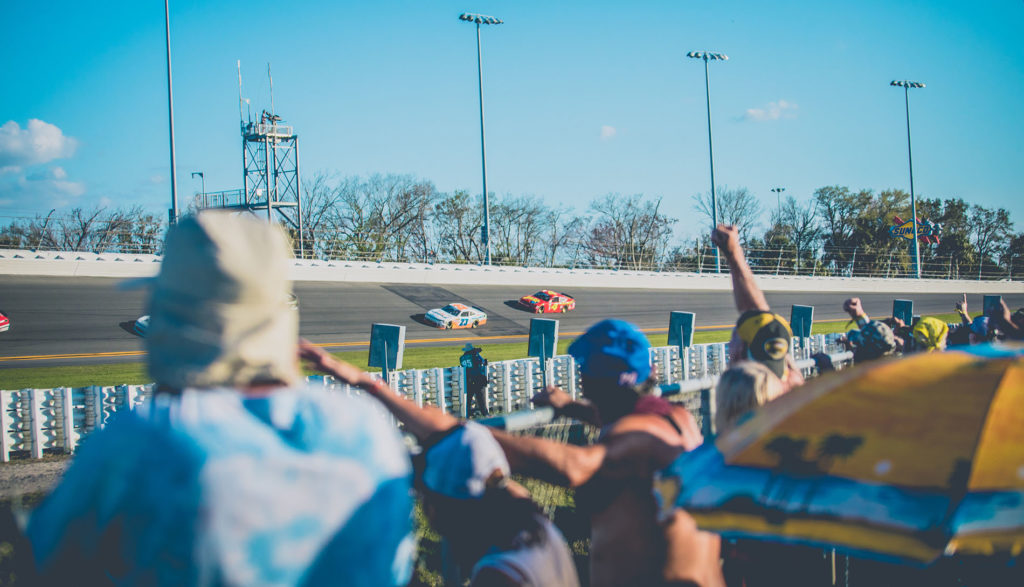NASCAR and Fox Sports show how sports broadcasting can get back on track

On Sunday May 17, the National Association for Stock Car Auto Racing (NASCAR) held its first race since the suspension of its season due to COVID-19 in March. Over an 11 day period, the association scheduled a series of seven races, restricted to two venues — the Darlington Raceway in South Carolina, and the Charlotte Motor Speedway in North Carolina — including the Coca-Cola 600 on the 24th.
While there were no fans in attendance, the races proved to be a hit, and marked NASCAR’s return — one of the first professional sports to do so — as a success. Just as interesting as the races themselves — thrilling though they always are — was the approach that the association and Fox Sports took to shooting and broadcasting the events. In the age of social distancing, as more leagues look to return to their regular schedules, careful consideration must be given to keeping broadcasting personnel, players, administrators, and more, as safe as possible. It looks like NASCAR and Fox found a way to pull it off.
NASCAR goes remote
Right off the bat, it’s worth acknowledging that NASCAR as a sport is more suited to social distancing conditions than many others. While basketball, football, and soccer have players regularly interacting with each other, a NASCAR driver mostly remains in his vehicle, well over six feet away from his competitors. The parts of the competition where social distancing needed to be most carefully enforced was during pit stops, when a driver’s crew had to make adjustments or quick repairs to the vehicle mid-race.
Because of this, for both NASCAR and Fox, the pit was where the most obvious changes had to be made. On top of reducing pit crews and enforcing regulations around the use of PPE, it was decided that there would only be one pit reporter, a substantial cut from what one might see at a race prior to the coronavirus pandemic.
Aside from cameramen and essential technical personnel (whose numbers were also drastically reduced), NASCAR and Fox relocated all play-by-play to Charlotte, North Carolina, where commentators and experts would analyze races remotely to ensure that speedways are not overly populated. While this scenario might be difficult to adapt to for some, NASCAR commentators actually got a fair amount of practice in remote broadcasting prior to the return of the season. Previously, NASCAR had been airing virtual races known as “iRacing” to keep fans satiated. In addition to keeping the brand strong and audiences happy, these events gave production teams additional preparation for the new model.
The view from the ground
On-site personnel have their own challenges to surmount, but much like the commentators they’ve found some silver-linings. A few years prior, Fox Sports had already begun upping its bandwidth capabilities, working with AT&T to enhance connectivity at speedways so that, when the time came, the broadcaster would be better able to adopt new technologies and resolutions. From the get-go, this has made it much easier to trust in the success of the new dispersed production model, ensuring that the content that Fox and NASCAR create is of the highest quality, despite these additional hurdles.
Another unexpected gift has been the ability to provide new and different shots and camera angles to viewers at home. While races have always been covered by a massive number of cameras (including three inside each and every vehicle and others in helicopters), the huge turnout that events get means that many of the ground camera personnel have to remain in specific fixed locations as they shoot the race. Now, however, with empty bleachers, Fox has been able to experiment with camera placement, introducing new angles, unencumbered by thousands of attendants.
Still, as thrilled as Fox and NASCAR have been about their success, they show no signs of letting up on safety protocols. Not only is all equipment regularly sterilized (the organizations have even adopted robotic cleaning apparatuses designed for medical facilities to help expedite the process), but technicians are extremely precise about sequencing tasks so that social distancing can be maintained. It’s essential to be certain where everyone is and what everyone is doing, both to compensate for the smaller crews but also to guarantee basic safety. Restricting upcoming races to two venues for the time being has made this easier, with a single crew ferrying equipment back and forth between the raceways to limit the number of people at any given location.
Even with all this in mind, it’s likely that things will have to change as time goes on. Speaking with TV Technology, Michael Davies, senior vice president of technical operations at Fox Sports, says that he fully expects procedures to evolve as the season progresses, and the broadcaster becomes more aware of what works and what doesn’t. For now, though, it looks as though Fox’s strategy is paying off — keeping fans happy and staff safe.
NASCAR and Fox Sports speeding onward
While many leagues are still working out how to resume play safely, the success stories from those who’ve been able to restart operations is heartening. Sports associations like NASCAR and broadcasters like Fox Sports are proving just how dedicated and creative they are as they strive to help fans find comfort and entertainment in a discomfiting time.
While better positioned than most sports for a return, the work that NASCAR and Fox have done to get back to racing is remarkable, and hopefully provides a roadmap for others who think this might be the moment for them to come back. Honoring safety protocols and thinking on their feet, those that have come back on top demonstrate the resiliency of sports broadcasting, and professional sports as a whole. When the right moment comes, we hope others can join suit and restart their engines.


